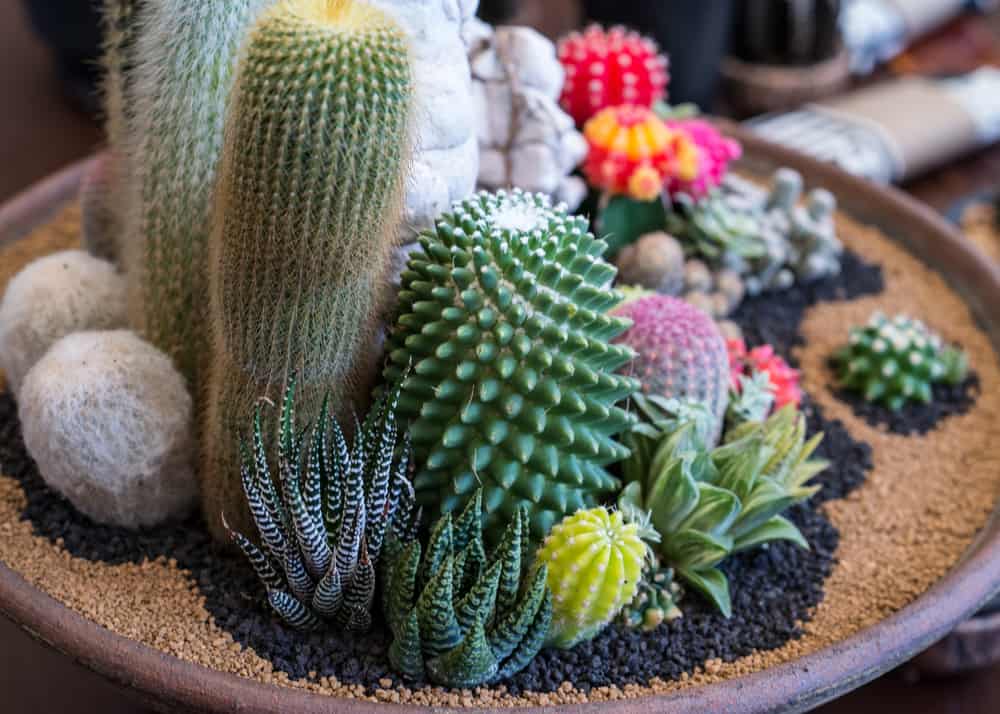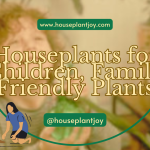HousePlantJoy is supported by our audience. When you purchase through one of our links, we may earn a small affiliate commission. As an Amazon Associate I earn from qualifying purchases. Your cost is not affected.
==================
Curious about pet-friendly house plants? If you’re a plant enthusiast and a pet lover, finding the perfect greenery that keeps both your leafy companions and furry friends safe is a top priority. Let’s explore a variety of pet-friendly house plants that not only enhance your space but also ensure a harmonious coexistence.
Read on, to know which plant is best suited for your home with no harm to your four-legged friend?
Thinking about adding some Pet-Friendly House Plants to your space?
Our pets are like family, and being a responsible pet parent means ensuring they’re not just happy but also safe.
Now, if you’re envisioning a home filled with plants, it’s essential to consider your furry companions. Will they be on board with the green additions?
Choosing the right plants is key, especially with some being potentially harmful. Luckily, there’s a bunch of non-toxic, pet-friendly options that not only boost your well-being and home aesthetics but also provide a nibble-proof environment for your pets.
Want to know which plants are the perfect fit for your home without any harm to your four-legged friend? Read on!
Exploring Pet-Friendly House Plants: Greenery That’s Safe for Your Furry Companions
Wondering how to enrich your home with vibrant greenery while ensuring a safe haven for your furry companions?
Dive into the world of Pet-Friendly House Plants, where we’ll guide you through a selection of non-toxic options that not only elevate your living space but also provide a worry-free environment for your four-legged friends.
As responsible pet parents, it’s our mission to strike a balance between a visually appealing home and the well-being of our beloved pets. Now, let’s explore these pet-friendly house plants together, discovering the perfect foliage that harmoniously coexists with your pets, bringing nature indoors without compromising their safety.
BOSTON FERN PLANTS
Renowned for their appealing appearance, Boston Ferns boast lush green foliage that is non-toxic. While cats might bat at them, rest assured, these ferns are safe for your pets. Acting as natural humidifiers, they maintain optimal moisture levels in the air, contributing to a purified environment free from formaldehyde. Consider adorning your bedroom with hanging baskets of Boston Ferns, and remember to mist their leaves regularly.
ORCHIDS
With their stunning aesthetics and pet-safe qualities, Orchids stand out as a popular choice for houseplants that are entirely safe for your four-legged friends. These low-maintenance plants add an elegant touch to your rooms without demanding much attention, even forgiving the occasional lapse in watering. Fun fact: there are over 20 types of orchids that make fantastic houseplants!
BIRD’S NEST FERN
A harmless and pet-friendly plant, the Bird’s Nest Fern thrives in moisture and low light conditions. Ideal for your bathroom, this plant can become a favorite spot for both you and your cats and dogs. Imagine starting your day with a face wash next to the Bird’s Nest Fern by your sink.
GLOXINIA
Featuring beautiful bell-shaped flowers with a velvety appearance, Gloxinia comes in various colors, including purple, blue, red, or pink. Often received as a gift plant, rest assured that it won’t harm your pet. Enjoy the aesthetic without worry.
CALATHEA RATTLESNAKE
Also known as the “zebra plant,” Calathea Rattlesnake boasts large, fascinating leaves. These tropical leaves are harmless to your furry friends and have the unique ability to move in response to light. As the sun sets, Calathea moves its leaves upward, producing a rustling sound. Avoid direct sunlight, keep the soil moist, but refrain from misting the leaves directly.
STAGHORN FERN
Famous for its unique addition to walls, the Staghorn Fern excels in hanging baskets or as a potted plant. Thriving in various light conditions, it could be the perfect choice to enhance your bathroom’s attractiveness without posing any risk to your pets. It requires minimal watering, typically every three weeks in damp conditions.
TRADERSCANTIA ZEBRINA
Known for its eye-catching color and curling leaves, the Tradescantia Zebrina creates a soft appearance. It’s a pet-safe plant that might become your cat’s favorite due to its curling soft leaves.
VENUS FLYTRAP
A funky addition to your indoor plants, the Venus Flytrap is a carnivorous plant that is safe for pets. While cats may play with it, nibbling poses no harm. Place it on a porch for low-maintenance care, requiring bright sunlight and distilled water to keep its fly-catching abilities intact.
CHRISTMAS CACTUS
A pretty and stunning plant with a range of flowers, the Christmas Cactus is an alternative to a mini Christmas tree. Preferring humidity over desert species, it blooms after a prolonged period of darkness. Blooming flowers bring joy without compromising your pets’ safety.
HERBS
Simple yet delightful, kitchen herbs like mint, basil, chamomile, and basil are easy to grow and delicious. Safe for your pets to snack on, these herbs thrive in bright sunlight by your window.
SPIDER PLANT
Functioning as an air purifier, the Spider Plant cleans the air from various home toxins. Sprouting baby spider plants, these can be grown in water or soil. While the plant itself doesn’t harm your pet, its stems may entice your cat. Consider placing it in hanging pots or metal baskets out of reach.
MONEY TREE
An excellent choice for smoggy cities, the Money Tree filters the air from pollutants like formaldehyde. Thought to bring good luck and prosperity, it is considerate to your pets as well.
PRAYER PLANT
A super stylish plant with a pink pattern on leaves, the Prayer Plant’s beauty lies in the unique nature of dropping leaves that move upward when the sun goes down, resembling praying hands. Nonpoisonous for both cats and dogs, it’s easy to maintain and favors low light and humid conditions.
PONYTAIL PALMS
Delightful tabletop trees for modern styling, Ponytail Palms are easy to care for and forgiving of occasional forgetfulness in watering. The swollen trunk serves as a water reservoir, and the gracefully arching leaves don’t litter dead leaves, making them a worry-free choice for your furry friends.
MOSAIC PLANT
Featuring eye-catching diamond-shaped leaves, the Mosaic Plant can enhance your courtyard fountain. Flourishing in low light, this floating plant with white or pink veining patterns on leaves is harmless to pets, although your curious kitty might be intrigued by the diamond-shaped leaves.
SWEDISH IVY
Concluding our list of pet-friendly house plants is Swedish Ivy. While some ivy varieties are toxic, Swedish Ivy is a safe choice for your home. A great hanging plant with very low maintenance requirements, it thrives with direct sunlight and is also known as Creeping Charlie.
Plant Care Tips: Nurturing Your Pet-Friendly Green Companions
Taking care of your Pet-Friendly House Plants is not just about aesthetics; it’s a commitment to keeping both your home and your furry friends thriving. Here’s a rundown of tips for each plant:
BOSTON FERN PLANTS:
- Light: Indirect light is ideal, but they can tolerate low light.
- Water: Keep the soil consistently moist but not waterlogged.
- Humidity: Appreciates high humidity; mist the leaves regularly.
BIRD’S NEST FERN:
- Light: Thrives in low to medium light conditions.
- Water: Keep the soil consistently moist but not soggy.
- Location: Ideal for bathrooms with higher humidity levels.
CALATHEA RATTLESNAKE:
- Light: Prefers bright, indirect light.
- Water: Keep the soil consistently moist but not waterlogged.
- Humidity: Enjoys higher humidity levels.
TRADERSCANTIA ZEBRINA:
- Light: Bright, indirect light is ideal.
- Water: Keep the soil consistently moist.
- Pruning: Trim to maintain the desired shape.
CHRISTMAS CACTUS:
- Light: Indirect light is preferable.
- Water: Keep the soil slightly moist, especially during blooming.
- Temperature: Cooler temperatures can encourage blooming.
SPIDER PLANT:
- Light: Indirect light is ideal.
- Water: Allow the soil to dry between waterings.
- Propagation: Grow new plants from the baby spiderettes.
PRAYER PLANT:
- Light: Low to medium light is preferable.
- Water: Keep the soil consistently moist.
- Humidity: Enjoys higher humidity levels.
MOSAIC PLANT:
- Light: Flourishes in low light conditions.
- Water: Keep the soil consistently moist.
- Floating Setup: Allow enough space for the plant to float freely.
ORCHIDS:
- Light: Bright, indirect light is crucial; avoid direct sunlight.
- Water: Water sparingly, allowing the potting mix to dry between waterings.
- Air Circulation: Provide good air circulation around the plant.
GLOXINIA:
- Light: Indirect light is best; avoid direct sunlight.
- Water: Keep the soil consistently moist.
- Temperature: Maintain a warm environment.
STAGHORN FERN:
- Light: Thrives in bright, indirect light.
- Water: Water every 3 weeks; mist or soak the plant.
- Location: Ideal for bathrooms or damp areas.
VENUS FLYTRAP:
- Light: Requires bright sunlight.
- Water: Use distilled water; keep the soil consistently moist.
- Feeding: Allow it to catch insects naturally; no additional feeding needed.
HERBS:
- Light: Full sunlight for at least 6 hours a day.
- Water: Keep the soil consistently moist.
- Pruning: Regularly harvest to encourage bushier growth.
MONEY TREE:
- Light: Bright, indirect light is suitable.
- Water: Allow the soil to dry between waterings.
- Pruning: Trim if needed to maintain shape.
PONYTAIL PALMS:
- Light: Bright, indirect light is ideal.
- Water: Allow the soil to dry between waterings.
- Soil: Well-draining soil is crucial.
SWEDISH IVY:
- Light: Prefers bright, indirect light.
- Water: Allow the soil to dry between waterings.
- Location: Hanging pots work well; ensure good drainage.
Remember, each plant has its unique needs, so tailor your care routine accordingly. Happy nurturing!
Ensuring Pet Safety: Monitoring and Responding to Plant Interactions
While incorporating pet-friendly house plants into your home can be a delightful experience, it’s crucial to prioritize the safety of your furry companions. Here are essential safety tips, specific to some of the plants mentioned:
1. Monitor Interactions:
- Boston Ferns: While generally non-toxic, some pets may be tempted to bat at the fronds. Keep an eye on their interactions and discourage excessive play.
- Orchids: Orchids are generally safe, but monitor your pets to ensure they don’t nibble on the leaves or knock over the delicate blooms.
- Venus Flytrap: Though safe for pets, the Venus Flytrap’s unique nature might attract playful behavior. Ensure it’s out of reach or in an area where your pets can’t disturb it.
2. Identify Signs of Ingestion:
- Familiarize yourself with signs of plant ingestion, such as excessive drooling, vomiting, or changes in behavior. If you notice any of these, it’s essential to act promptly.
- Gloxinia: Keep an eye out for signs of discomfort if your pet shows interest in the bell-shaped flowers. While generally safe, individual reactions can vary.
3. Immediate Actions if Ingestion Occurs:
- If you suspect your pet has ingested a plant:
- Contact Your Vet: Reach out to your veterinarian immediately. Provide details about the plant and your pet’s symptoms.
- Save Samples: If possible, save a sample of the plant your pet ingested. This can help the vet identify the potential toxicity.
- Don’t Induce Vomiting: Avoid inducing vomiting without professional advice, as it can be harmful in certain situations.
4. Prevent Access to Toxic Plants:
- Spider Plant: While generally safe, the stems might attract curious cats. Keep it in hanging pots or areas where your pets can’t reach the stems.
- Calathea Rattlesnake: Place it in locations where your pets can’t disturb the leaves. Although non-toxic, minimizing contact is advisable.
5. Consultation with Vet:
- For all plants, if you’re unsure or have concerns, consult your veterinarian. They can offer guidance tailored to your specific pet’s health and behavior.
Remember, each pet is unique, and their reactions to plants can vary. Being proactive in monitoring interactions and seeking professional advice when needed ensures a safe and enjoyable environment for both your plants and your beloved pets.
Cultivating Harmony with Pet-Friendly House Plants
Embrace the Green Harmony: As we welcome pet-friendly house plants into our homes, fostering a safe haven for both foliage and furry companions is our shared responsibility. Monitor your pets’ interactions, stay vigilant, and revel in the beauty of non-toxic options like Boston Ferns, Orchids, and the playful Spider Plant.
Swift Action, Informed Choices: If a pet shows unexpected interest, swift action is paramount. Contact your vet, provide plant details, and save samples if needed. Proactive care ensures a worry-free coexistence with your green allies.
Your Green Partnership Awaits: From the velvety allure of Gloxinia to the captivating Money Tree, each plant enhances your space. Explore, observe, and consult your vet when needed. Your home, adorned with pet-friendly house plants, can be a haven where well-being and beauty thrive together.
Join the Green Journey: Start or continue your journey with pet-friendly house plants. Cultivate a space where nature and companionship seamlessly merge. Your pets and plants will thank you.
Happy cultivating!
Frequently Asked Questions
Are all house plants safe for pets?
No, not all house plants are safe for pets. Some plants can be toxic and pose a risk to your furry friends. It’s essential to choose pet-friendly options, like Boston Ferns, Orchids, and Spider Plants, to ensure a safe environment.
What should I do if my pet ingests a house plant?
If your pet ingests a house plant, contact your veterinarian immediately. Provide details about the plant and your pet’s symptoms. Save samples if possible and avoid inducing vomiting without professional advice.
Can I have pet-friendly house plants in any room of my home?
Yes, you can have pet-friendly house plants in various rooms, but consider your pet’s behavior and the specific needs of each plant. For example, Boston Ferns thrive in indirect light and high humidity, making them suitable for bedrooms, while Spider Plants, safe for pets, are ideal for hanging pots or areas out of your pet’s reach.
Discover More on Social Media!
Explore the vibrant world of pet-friendly house plants on our social media channels! Connect with a community passionate about both houseplant care and pet well-being.
? Facebook: Join us on Facebook for engaging content and discussions.
? Instagram: Follow us on Instagram for visual delights, product reviews, and more.
? Pinterest: Discover curated boards and ideas on Pinterest.
? Twitter: Stay updated and connect with like-minded enthusiasts on Twitter.
Join the conversation, share your experiences, and cultivate joy with pet-friendly house plants!




























